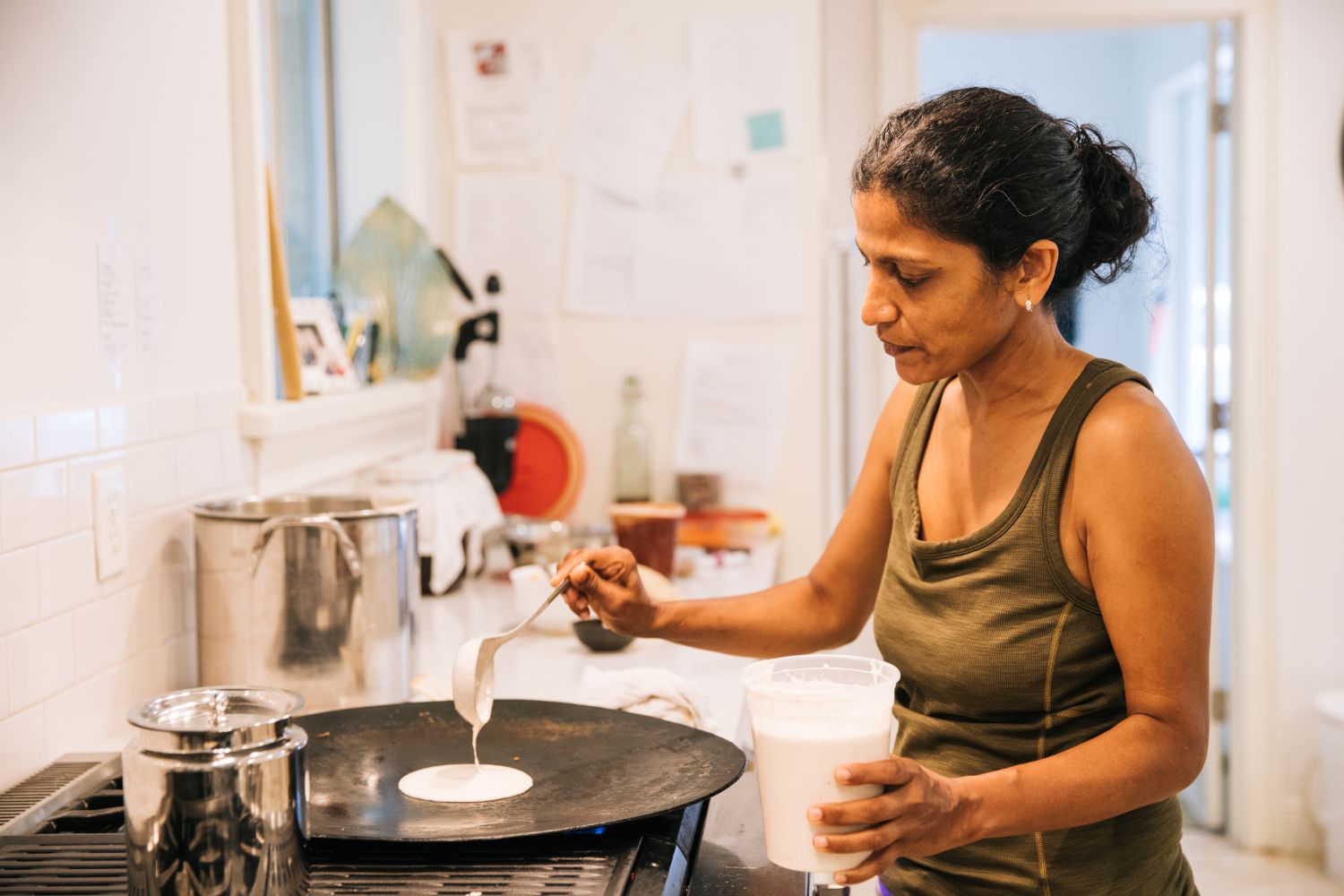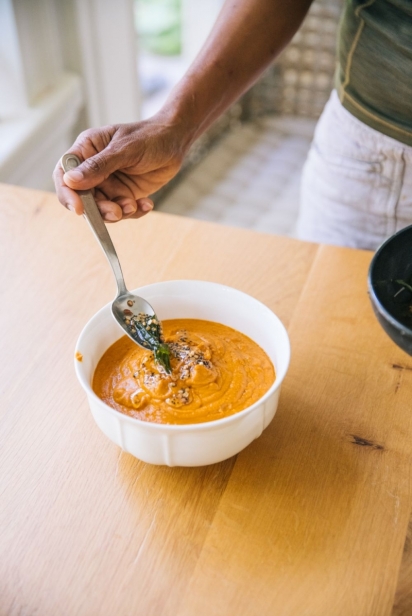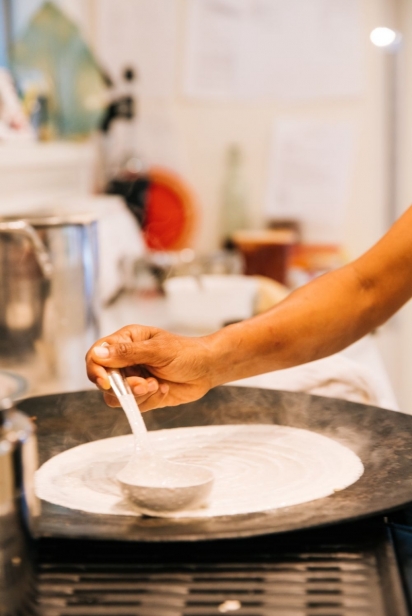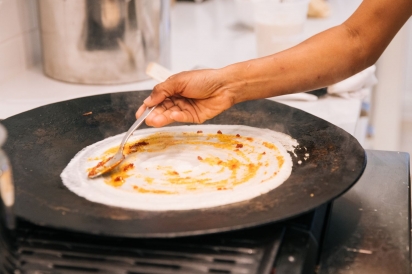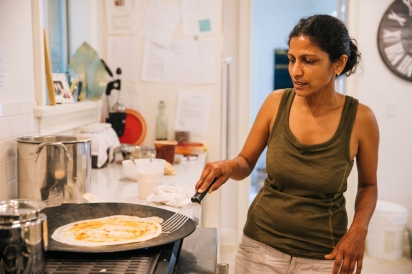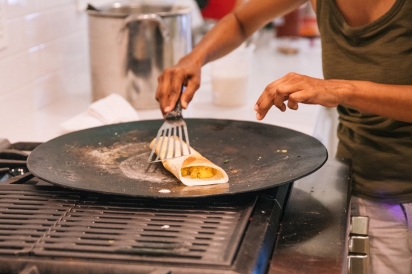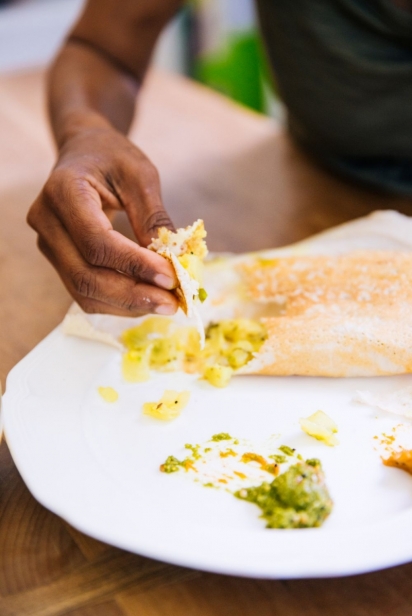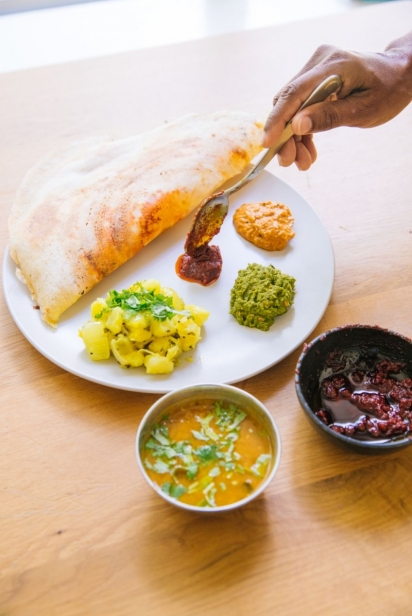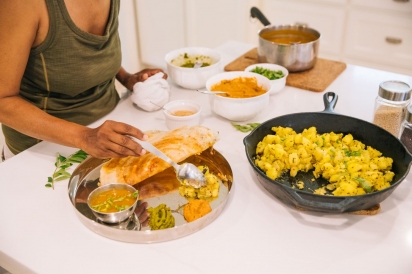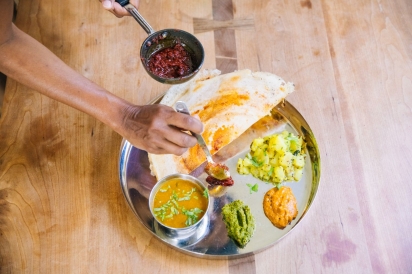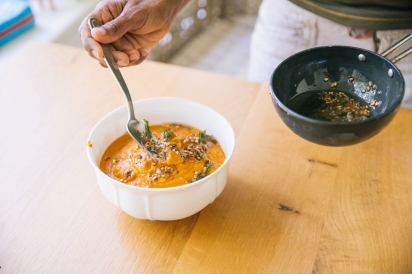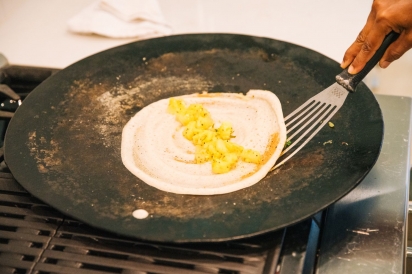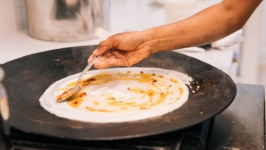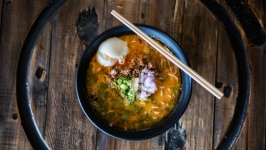Indian Food is More than Curry
So there I was, a recent immigrant deep in east Texas, when a new friend proclaimed, “I love curry!” Having spent my entire childhood in India, you might think I knew a thing or two about curries. Alas, no. I told him I had never heard of it. I still remember the confusion on his face (and in my mind) as he insisted it was a popular Indian food.
As it turns out, this was just a lost in translation moment I experienced, as do many Indian immigrants, because we don’t have food that is called “curry” or a spice that is called curry powder. What we do have are descriptive names for dishes based on the ingredients, region of origin or even the type of pot or pan it is cooked in. Tawa Chicken means chicken cooked on a flat cast iron pan. The name Murgh Lahori gives a nod to both the preparation style of this chicken dish as well as a particular region in the state of Punjab. When language and cultural barriers complicate things but you love the food, what do you do? You invent curry.
“Curry” is a moniker credited to the British, who, as the story goes, couldn’t pronounce the word “kari” from the South Indian language Telugu. The British imported Indian recipes and half a century later, Indian food is the reigning queen of takeout in the UK, with a variety of options far beyond curry. I have been the beneficiary of that variety during my visits to London to see family. Even McDonald’s has Indian food offerings on the menu. Evidence of the British love affair with Indian food knows no bounds, with evidence found equally in high society Michelin-rated restaurants to authentic street food choices in crowded pubs.
Here on our side of the pond, we still label Indian food as exotic, which on some level just means unapproachable. Many diners who brave this realm still pick only the safe options from the menus, which usually happen to be some type of curry or chicken tikka masala. Generally, when Indian restaurants serve only dishes outside of the curry box, such as pav bhaji or chaat, they risk going out of business.
These dishes are not difficult to make, and I can prepare them at home. Occasionally, though, it is nice to have someone else do the cooking, and I will see if any of my desi friends in the area, (immigrants from the homeland), are cooking up favorite dishes. Or I’ll head to a local restaurant that can cater to my memories and my stomach at the same time.
It is human nature to seek familiarity and comfort, especially in what we eat. Even when we want to be adventurous, if we do not have a good guide to hold our hand, we may shy away from new culinary experiences. So please allow this desi farmer/foodie to be your guide and offer you a couple of suggestions for the next time you fancy Indian food.
Let me start with an insider tip first: The Bootleg Desi, or traditional Indian food scene, is a thing! It is a solid way to explore various regional offerings and street food renditions. It is a maker-driven market that is primarily driven by the passion of stay at home moms, recent immigrants and older adults who work hard to recreate experiences through food making. These dishes may be labor intensive regional offerings such as daal baati or delightful street foods such as paani-poori. How do you get into this scene? Well, it takes a bit of exploring and getting into the hearts and minds of desi people, those who are natives of India, to make those local connections.
But while you are looking for a way to make those contacts, you can still check out our local Indian restaurants. Take along some of these pro tips to peek into the world where Queen Curry has plenty of interesting dukes and duchess dishes in her court.
Pro tip #1: Show up around 11am on weekends at 5th Element in Jacksonville’s Baymeadows neighborhood. They have quite a spread when the buffet is available, but remember to look beyond the sea of curries and ask for the South Indian side of the buffet.
Pro tip #2: Try plain or masala paper dosa at Bawarchi Biryani, also located on Baymeadows. When the food arrives, skip the knife and fork; eat a dosa with your hands. Break off a piece, dunk it in chutney paste and wash it down with sambhar daal. (Okay, you may use a spoon for sambhar since we are here in America.) Chances are if you haven’t had a dosa before, you will fall in love with the first bite. You may walk out of the restaurant stuffed but already eager to return for more.
When the fancy strikes again, go back and try Bawarchi’s biryani. You can order it with your choice of standard meat, e.g. chicken, but while you are at it, go all out and try goat or mutton.
Pro tip #3: Vegetarian biryani is not a thing. Let that be a mantra that plays in the back of your head as you are choosing your options. Real biryani comes only in one level of spicy. If it is too spicy for you, tone it down using the yogurt sauce that comes with the entrée and feel free to ask for more yogurt. If it’s not spicy enough, add the spicy peanut sauce that is likely served with the dish. To enjoy the small pieces of bone-in meat in your biryani, again you may have to use your hands. There may not be a lot of meat on the bones but what’s on there is good stuff. You can’t fully enjoy the meat when you try to eat the pieces with a fork and you risk looking silly doing it. As you are sucking on the flavorful bones, I hope you start your own love affair with this beloved rice dish and look for more new experiences.
Good food needs a good friend to become a great meal. Dive in, eat like desi people and you may just arrive at a new level of culinary joy, far beyond the curry.


